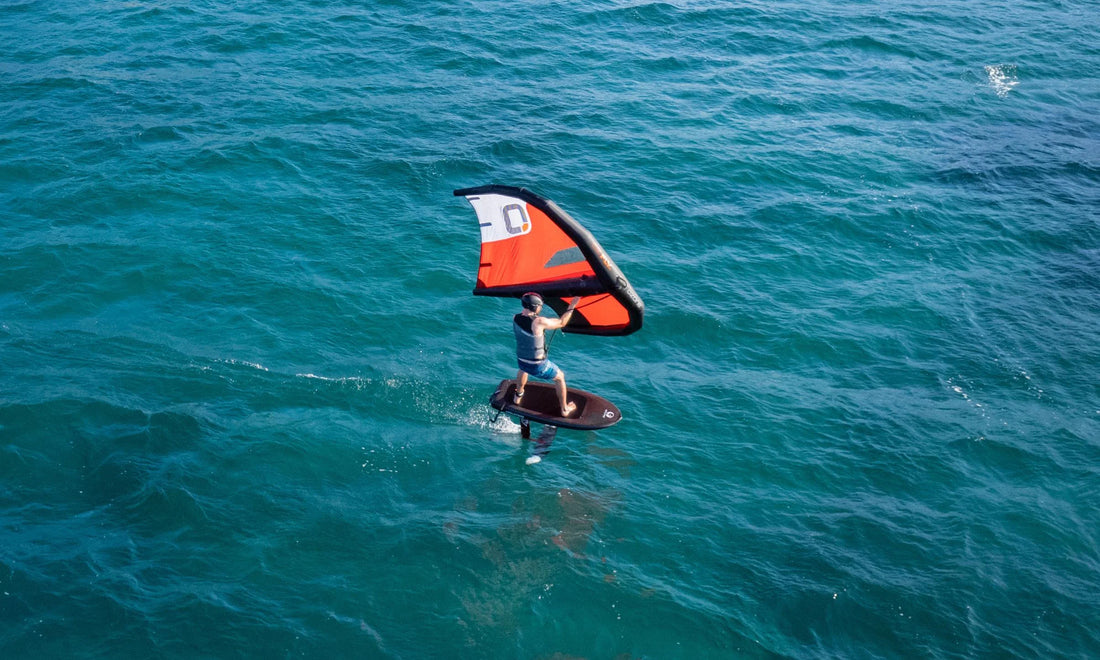
The Best Beginner Wingfoil Set Up
Share
Winging is hot stuff right now. Everyone wants to learn. Luckily in the last couple of years the path has got a lot simpler. Back in the day we had to mess around shimming foils so they would work on boards, and many even had to get tracks put in boards. This is all behind us now luckily! Today it is really pretty easy!
The Foil
In terms of picking gear, lets start with the most exciting stuff, which is of course the foil. As far as we are concerned this is an easy answer - look at the AXIS SES kit. SES stands for Super Easy Starter. It is designed exactly with this in mind. It gives you everything you need to get up and going in a nice simple package at a great price. The components are all modular and compatible with the rest of the AXIS Foils Range - meaning you can replace singular parts as you learn and progress through the ranks.
If you are 80kg or heavier, look at the AXIS SES 1040 package. If you are lighter, look at the 940.
The SES kit uses the classic AXIS modular mast and fuselage system, but the wings are made with fibreglass. This makes them a lot cheaper, but also a bit heavier. If you want pretty much the same set up, but with carbon wings, then look at the BSC 1060 and 970 as the best alternatives, paired with the Freeride 440 rear wing.
The Board
Now this is a more contentious issue. There are different schools of thought, and the route you take will require some pretty honest assessment of your abilities. Realistically most people will want to be looking at a board with plenty of volume, around 110/120 litres. Take your body weight in kg, and add 20-30%. If you struggle with balance and getting up from your knees, then go larger. If you think you will get this pretty quickly, then go a bit smaller.
There are plenty of good options out there, but right now we recommend:
- the AXIS Froth
- the SIC Maui Raptor - currently on sale!
- the Infinity Tombstone Foil Board - on sale!
Whatever you end up with, the chances are you will want another board after you get the hang of the basics anyway - but this could be 6-12Months or more. The board has to be big enough that you can get up on it and be stable enough to worry about what you are doing with the wing and what the foil is doing.
If you start with something too small, you will spend all your time trying to balance on the board, and not getting up and riding. You will always find another learner who will be willing to buy your board off you.
The Wing
Most wings are pretty good all rounders and will do the job. When learning, you have no technique and will favour gruntier wings which offer more easily accessible power. Stay away from the high performance wings which require good pumping technique. These days there are also wings designed with learning in mind, such as the Ozone Fly V1. These are very intuitive and easy to use.
Current recommendations:
- Ozone Fly V1 - designed for learning
- Flysurfer Mojo - all rounder, currently on sale!
- SIC Maui Raptor Wing - currently on sale!
Safety Gear
When learning to wing you will spend a lot of time falling off and swimming about. We recommend everyone wears a helmet and an impact vest. The helmet is obvious. The impact vest will protect your core from any contact with the foil, but also the constant crashing into the water. It also offers some extra buoyancy when out in the water. Learning to wing is very tiring at the beginning especially, so it is worth taking extra precautions.
Current recommendations:
- the Sooruz Fifty vest
- the Sooruz Ride helmet.
Once you have your gear, it is all about putting the hours in. Wingfoiling is one of those sports which requires a fair bit of dedication to learn, but is very rewarding afterwards. Get in touch if you need any advice on gear or setups.
